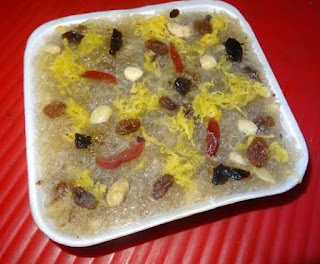A dessert is something sweet eaten after the main course of the meal is over. Be it a fruit salad or a scrumptious piece of cake, a generous dollop of ice cream or a platter of assorted chocolates, desserts are always welcome.
In India, since most of our food is spicy, a sweet ending in the form of Indian mithai is something that we look forward to. In fact, parents often bribe their little ones with a little extra helping of dessert if they finish ALL their food first.
However, in some parts of the world, such as much of central and western Africa, and most parts of China, there is no tradition of having a dessert to conclude the meal.
Did You Know?
The word "dessert" originated from the French word desservir, meaning "to clear the table". In his book 'A History of Dessert', Michael Krondl explains that it refers to the fact that dessert was served after the table had been cleared of other dishes.
Let's now delve into the history of sweets. In ancient Mesopotamia and India, sweets were offered to the gods to delight them in the hope of blessings and boons.
Dried fruit and honey were probably the first sweeteners used in most of the world, but the spread of sugarcane around the world was essential to the development of dessert.
We all know that refined or white sugar is processed from the juice of the sugarcane, molasses being a by-product of the process. Jaggery is the raw form of this sugar and is supposed to be more nutritious than refined sugar.
Sugarcane was grown and refined in India before 500 BC and was crystallized, making it easy to transport, by AD 500. Sugar and sugarcane were traded, making sugar available to Macedonia by 300 BC and China by AD 600. In the Indian subcontinent, the Middle East, and China, sugar has been a staple of cooking and desserts for over a thousand years. Sugarcane and sugar were little known and rare in Europe until the twelfth century or later when the Crusades and then colonization spread its use.
Europeans began to manufacture sugar in the Middle Ages, and more sweet desserts became available. Even then sugar was so expensive that usually only the wealthy could indulge on special occasions.
The Industrial Revolution in Europe and later America caused desserts (and food in general) to be mass-produced, processed, preserved, canned and packaged.
Ingredients for a sweet dessert
Sweet desserts usually contain cane sugar, palm sugar, brown sugar, honey, or some types of syrup such as molasses, maple syrup, treacle, or corn syrup.
Other common ingredients in Western-style desserts are flour or other starches,
Cooking fats such as butter or lard, dairy, eggs, salt, acidic ingredients such as lemon juice, and spices and other flavoring agents such as chocolate, peanut butter, fruits, and nuts.
The proportions of these ingredients, along with the preparation methods, play a major part in the consistency, texture, and flavor of the end product.
ROLE OF EACH INGREDIENT
1) Sugars contribute moisture and tenderness to baked goods.
2) Flour or starch components serves as a protein and gives the dessert structure.
3) Fats contribute moisture and can enable the development of flaky layers in pastries and pie crusts.
4) The dairy products in baked goods keep the desserts moist.
5) Many desserts also contain eggs, in order to form custard or to aid in the rising and thickening of a cake-like substance. Egg yolks specifically contribute to the richness of desserts. Egg whites can act as a leavening agent or provide structure.
And now, let us feast our eyes on some popular desserts from around the world.
CAKES & CUPCAKES
PUDDINGS & PIES
MY FAVOURITES
 |
| Bebinca |
 |
| Letri WHAT ABOUT YOU? WHICH ARE YOUR FAVOURITE DESSERTS? Do mention in comments. |














No comments:
Post a Comment